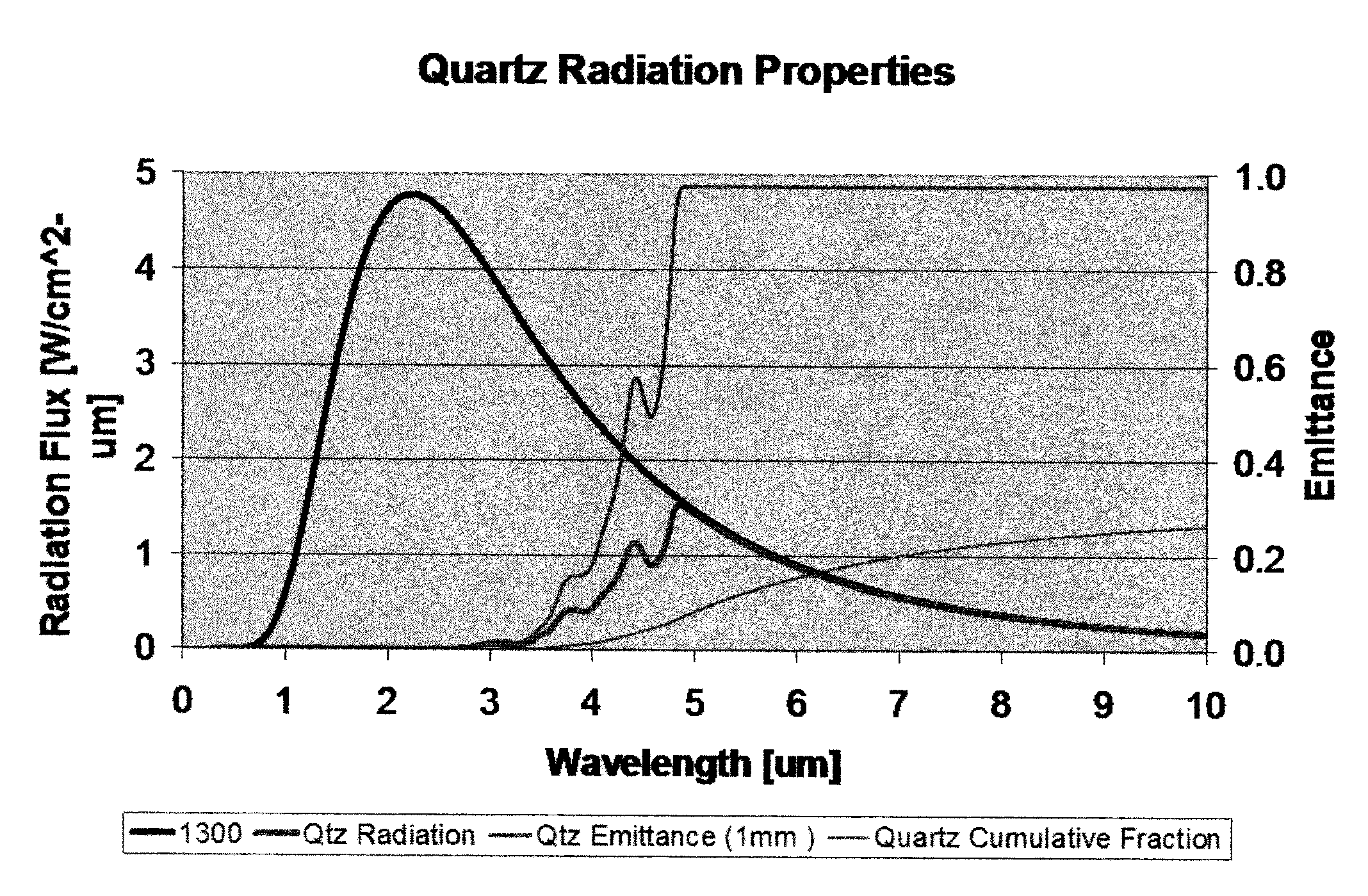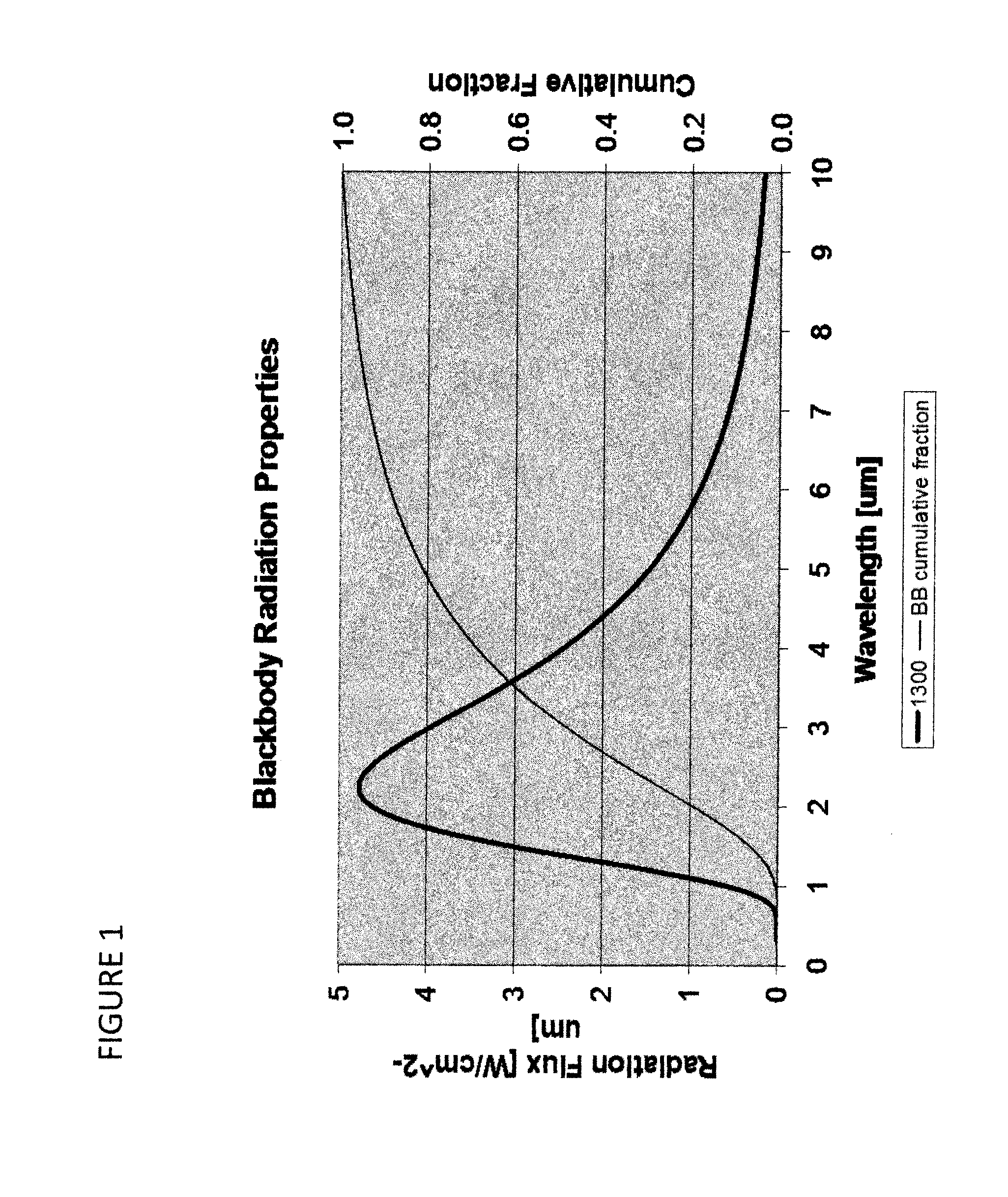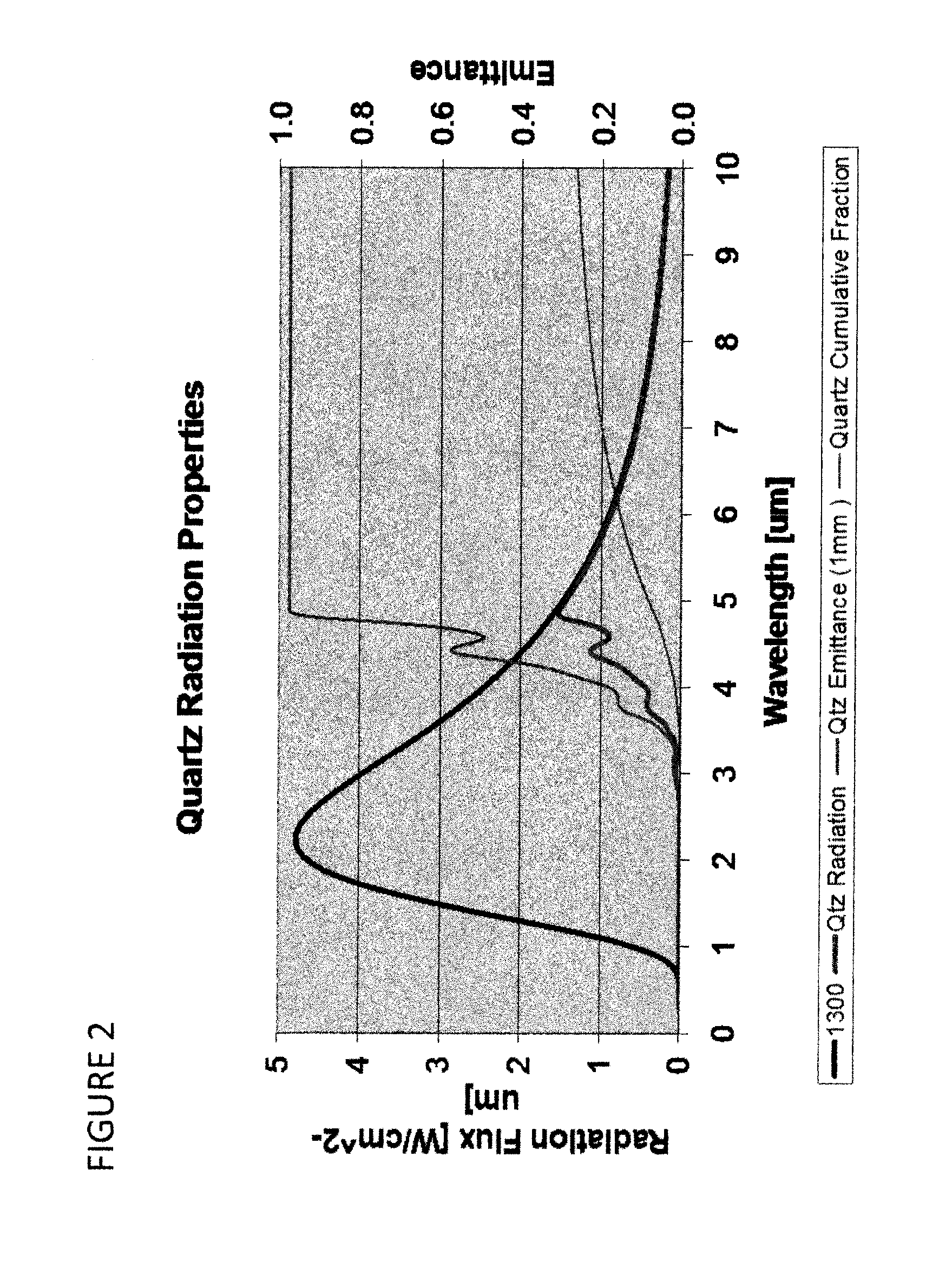Highly emissive material, structure made from highly emissive material, and method of making the same
a technology of emissive materials and high-temperature materials, applied in the field of high-temperature materials, can solve the problems of high operating temperature or high stress, conventional high-intensity discharge lamps can be limited, conventional lamps to run hotter than their materials allow, and fail more quickly, so as to improve reduce the emissivity of arc tubes, and reduce the effect of heat dissipation
- Summary
- Abstract
- Description
- Claims
- Application Information
AI Technical Summary
Benefits of technology
Problems solved by technology
Method used
Image
Examples
example 1
[0094]Identical ceramic glass slides were used for this example. A first slide remained uncoated, while a second ceramic glass slide was coated by sputtering with an indium tin oxide composite containing 80% indium oxide doped with 20% tin. Then it was further oxidized at 500° C. in open air for 30 minutes to form indium tin oxide. The coated slide and the uncoated slide were placed side-by-side in a convection oven to test the infrared radiation emissions from each of the slides under the same operating conditions. FIG. 14 is an image of the spectral radiation of the slides, developed using a 3.1 micron filter. The spectral temperature scale indicates that the coated slide heated only to a temperature of about 250° C., as compared to the uncoated slide which exhibited a temperature of about 320° C. Therefore, the coated slide demonstrated a cooling effect as it radiated a greater amount of heat away from the slide, while the uncoated slide absorbed that same amount of heat. This re...
example 2
[0096]Once the foregoing was completed, a coating of the same composition as in the prior Example 1, i.e., indium tin oxide having an indium oxide content of 80%, was prepared as in Example 1 and deposited on the inner surface of an actual ceramic metal halide 150 W lamp available commercially from General Electric. The coating was deposited using a sputtering method. This lamp and an identical lamp that remained uncoated were then subjected to a lamp temperature measurement during lamp operation. The temperature measurement was performed in vacuum using an infrared camera with an 8-12 um filter. FIG. 16 is a graph showing the increase in temperature, as measured at the arc tube body center, for the two lamps as a function of time. The coated lamp ran at at least 200° C. lower than the uncoated lamp, indicating that the coating was successfully cooling the lamp as intended.
example 3
[0097]To verify the foregoing, the coated lamp from Example 2 was then used for further testing. In this example, the coating on the lamp from Example 2 was scratched to completely remove the coating from a portion of the lamp. The lamp was then subjected to the same test method as used in Example 2 to more accurately determine the effect of the coating. FIG. 17 is a graph of the temperature at the arc tube center of the lamp as a function of time, and comparing the uncoated and coated portions of the lamp. FIG. 18 is an enlargement of the same graph showing just that data for the temperature range between 800-1200° C. As can be seen therein, the coated portion of the lamp exhibited a temperature of at most about 919° C., while the uncoated portion of the same lamp exhibited a temperature of about 1023° C. This corresponds to an actual difference in the same lamp of more than 100° C. In other words, the uncoated portion of the lamp surface absorbed and retained enough heat energy to...
PUM
| Property | Measurement | Unit |
|---|---|---|
| Temperature | aaaaa | aaaaa |
| Electric charge | aaaaa | aaaaa |
| Temperature | aaaaa | aaaaa |
Abstract
Description
Claims
Application Information
 Login to View More
Login to View More - R&D
- Intellectual Property
- Life Sciences
- Materials
- Tech Scout
- Unparalleled Data Quality
- Higher Quality Content
- 60% Fewer Hallucinations
Browse by: Latest US Patents, China's latest patents, Technical Efficacy Thesaurus, Application Domain, Technology Topic, Popular Technical Reports.
© 2025 PatSnap. All rights reserved.Legal|Privacy policy|Modern Slavery Act Transparency Statement|Sitemap|About US| Contact US: help@patsnap.com



